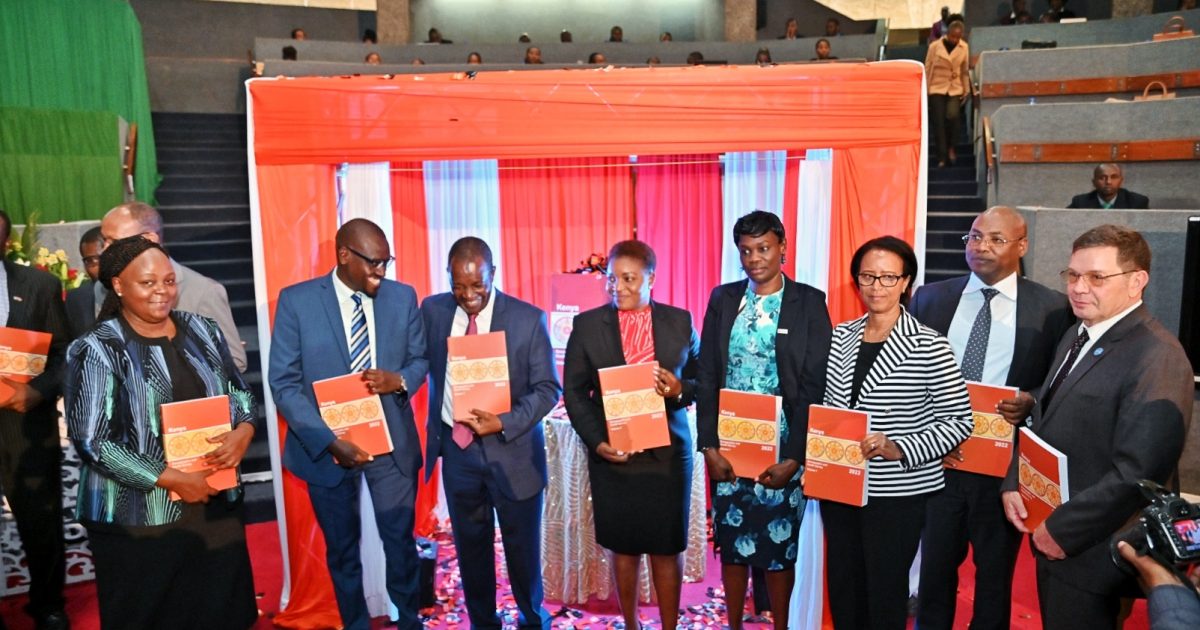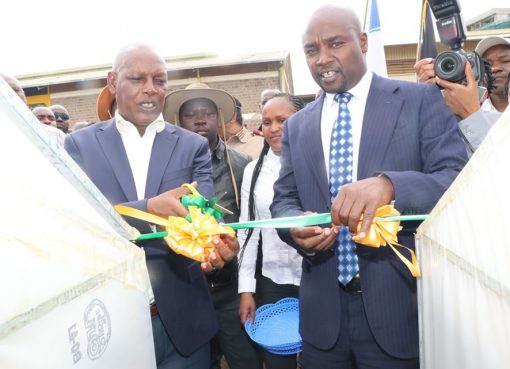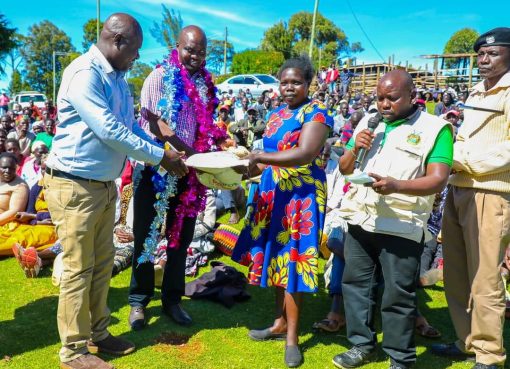The Kenya National Bureau of Statistics (KNBS) has in partnership with the Ministry of Health released a report on 2022 on Kenya Demographic and Health Survey (KDHS) which provides a comprehensive analysis of the survey findings.
Speaking during the launch, National Treasury and Economic Planning Cabinet Secretary (CS) Prof. Njugina Ndung’u said that the survey, conducted after every five years, provides updates of demographic and primary health care indicators.
The CS observed that the survey goes a long way in the guiding, planning, implementation, monitoring and even evaluation of population and health-related policies, programmes and projects at the national, regional and county levels.
“The survey report provides recent statistics that will be used in monitoring and evaluating the implementation progress of the Kenya Kwanza administration and the bottom up economic transmission agenda,” Ndung’u reiterated.
He pointed out that the report measures progress towards achieving national and international development agenda targets that include the country’s long-term development groupings that is provided by the Kenya Vision 2030.
Ndung’u also mentioned that the launch of the report would mark a new beginning of in-depth analysis that will lead to a deep understanding of the final review of the survey providing a basis of programmatic interventions and policy development.
He further announced that Health Insurance is fundamental to enhancing access to quality health care since it aids in substantially reducing the out-of-pocket cost associated with illness.
According to the CS, the survey findings showed that 1:4 persons in Kenya have forms of health insurance where the insurance coverage is higher for people in urban areas than those in rural areas.
“The National Hospital Insurance Fund (NHIF) is the most common type of health insurance,” Ndung’u emphasized.
Ndung’u mentioned that the findings of the survey are instrumental in guiding evidence-based decision-making processes from the National to County Government, policymakers, programme managers, planners and development partners.
In her remarks, Ministry of Health CS Susan Wafula said that KDHS is one of the sources of health data used to complement routine health data.
“At the end of this week as a Ministry, we shall be launching a rapid results initiative to end Aids in children by 2027 in Homa Bay County,” Wafula announced, adding that only a quarter of Kenyans have a form of health insurance, therefore, that would be one of the focus point on areas of improvement in the health sector.
The CS remarked that the data provides a good background for reforms at the NHIF as they structure how best to implement Universal Health Coverage through primary health care networks.
Wafula added that the KDHS results come at a good time when the Kenya Kwanza Government is in the year of its first administration as the results will serve as a basis for future investments.
The survey is the Seventh in Kenya, the first KDHS having been taken in 1989 and subsequent ones in 1993, 1998, 2003, 2008/09 and 2014. It is part of an international series of Demographic and Health Surveys which represent household surveys.
KDHS provide estimates of socio-economic, demographic, health and nutrition indicators which guide the national and county governments in planning, implementation, monitoring and evaluating population and health-related policies, projects and programmes.
By Peace Muthoka and Emma Jolly Wambui





